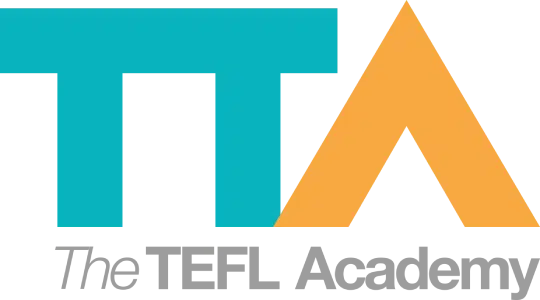IELTS And TOEIC Demystified: A Teacher’s Guide To The Two Tests
Table of Contents
- Introduction
- What are IELTS and TOEIC?
- Purpose and audience
- Test format and structure
- Scoring and results
- Global recognition
- Which test should you take?
- Classroom prep
- Supporting students
We live in a highly connected world, where English is used in almost every sphere of our personal and professional lives. Listening to podcasts, reading, emailing, texting, social media, travelling, studying, getting professional accreditation, conducting business, meetings and conferences – many of us do these things every day in English.
For EFL and ESL students, English proficiency is invaluable as it opens doors to many opportunities for growth and development. There are many standardised tests available globally for them to choose from.
We asked TEFL test prep teacher Natalie to compare the TOEIC and IELTS tests for us. She has experience preparing EFL and ESL students for both these exams for a range of different reasons.
As she explains: As an ESL teacher, if you need to prepare your students for an English proficiency test, it’s useful to understand its key characteristics to guide them.
A bit confused about all the different EFL exams? We don’t blame you! We break it down for you in this post on the blog: EFL Exams Explained.
What are the IELTS and TOEIC tests?
Let’s start with the basics: What do IELTS and TOEIC mean?
IELTS → International English Language Testing System
TOEIC → Test of English for International Communication
Read more: Navigating The IELTS
Both tests are recognised globally by a wide range of public and private institutions. They’ve both been around for around 45 years, but they each serve different purposes.
Purpose and audience: Who takes these tests and why?
Like most English standardised tests, TOEIC and IELTS measure English proficiency across four core areas, namely: listening, reading, speaking and writing.
TOEIC is primarily focused on assessing practical communication skills in a business or professional context. For example, it incorporates email, text messages and technology-related vocabulary to measure how well an individual can communicate in English in a business setting.
On the other hand, IELTS is broad and covers practical language skills for everyday communication and academic purposes. In fact, there are two modules: IELTS General Training (mostly for immigration purposes, work and training) and IELTS Academic (primarily for academic purposes).
Test format and structure: How IELTS and TOEIC are set up

TOEIC
There are two sets of TOIEC tests that can be taken separately. They assess intermediate to advanced English proficiency needed at the workplace.
The TOEIC Listening and Reading Test is a multiple-choice assessment
Listening:
- assesses a learner’s ability to understand spoken English.
- 100 questions in a mixed format (e.g. photographs, statements, questions, conversations).
- Time: 45 minutes
Reading:
- assesses a learner’s ability to understand written English.
- 100 questions in a mixed format (e.g. sentence and text completion, responses to passages).
- Time: 75 minutes
The TOEIC Speaking and Writing Test
Speaking:
- focuses on spoken English at work and in day-to-day situations. This includes pronunciation, intonation and stress, grammar, vocabulary and context.
- 11 tasks, ranging from reading a text aloud, describing a picture, responding to questions and expressing an opinion.
- Time: 20 minutes
Writing:
- tests grammar and vocabulary and assesses the quality and variety of sentences and a learner’s ability to support an opinion.
- writing a sentence based on a picture, responding to a written request and writing an opinion essay.
- Time: 60 minutes
IELTS
The General Training and Academic tests both take two hours and forty-five minutes to complete.
The Speaking and Listening sections are the same for both, but the Reading and Writing sections are different.
For example, the vocabulary for the Academic test is adapted to the student’s ability to study in English whereas the General Training focuses on individuals seeking to migrate.
- Speaking:
- a recorded 3-part, face-to-face interview
- Time: around 14 minutes
- Listening:
- 40 questions – a mix of multiple choice, information matching, sentence completion, short-answer questions.
- Time: 30 minutes
- Reading:
- a 3-part test
- 40 questions, including a mix of multiple choice, information/ headings matching, sentence completion and short answer questions.
- Time: 60 minutes
The difference between the General Training and Academic is the nature of the content in the texts, which will come from different sources to suit the purpose of the test.
- Writing: a 2-part test.
- General Training:
- the individual responds to a situation by writing a letter of at least 150 words and discusses a point of view, argument or problem in at least 250 words.
- Time: 60 minutes
- Academic:
- the individual describes some visual information by writing a letter of at least 150 words and discusses a point of view, argument or problem in at least 250 words.
- Time: 60 minutes
Scoring and results: What do the numbers mean?
TOEIC and IELTS use different ranges for their test scores. TOEIC scores range from 0-990 whilst IELTS scores range from 0-9. Both are aligned to Common European Framework of Reference (CEFR) standards as per the table below.
CEFR Level A1 (Beginner)
- TOEIC: 0–400
- IELTS: 0–2.5
CEFR Level A2 (Elementary)
- TOEIC: Not specified
- IELTS: 3–3.5
CEFR Level B1 (Intermediate)
- TOEIC: 405–600
- IELTS: 3.5–4.5
CEFR Level B2 (Upper Intermediate)
- TOEIC: 605–780
- IELTS: 5–6
CEFR Level C1 (Advanced)
- TOEIC: Included in 785–990 range
- IELTS: 6.5–7
CEFR Level C2 (Expert)
- TOEIC: 785–990
- IELTS: 7.5–9
Psst! If you’re not that clued up on proficiency levels and the CEFR yet, read this.
IELTS and TOEIC tests are not a “pass” or “fail” exam. Different jobs require different levels of English proficiency. This means that individuals can continue to improve and use the scale to measure their progress.
For both TOEIC and IELTS, once the test is taken, the results are valid for two years.
Global recognition: Where are IELTS and TOEIC accepted?

Officially speaking, over 14,000 organisations across more than 160 countries accept TOEIC scores as an assessment of English proficiency.
According to the British Council’s IELTS website: “IELTS is accepted by more than 10,000 organisations in over 140 countries. Those organisations include governments, academic institutions and employers with 3,000 in the USA alone.”
Which test should your students take?
Which test a learner should take is not a decision of personal preference. These exams are usually taken out of necessity. Which exam they should take depends on their specific needs.
Do they need to prove their level of proficiency for a job or to study? Do they need a test recognised for academic purposes or for the workplace? Which country do they need it for? What do institutions or employers in that country accept or prefer?
These are all questions which can help students decide which proficiency test to take.
Here is a general idea of who each test is suitable for:
TOEIC is very popular with professionals who are looking
- to work in a multinational corporation, where English is the primary mode of communication (spoken and written) among co-workers and with customers.
- for a promotion or a new position, where English proficiency provides an edge.
- to travel with work or relocate to an overseas subsidiary/ head office, where English fluency is required.
- to evaluate their own level of English proficiency so they can identify areas of focus for improvement and can track progress over time.
IELTS is very popular with individuals who are seeking
- to enrol in university, higher education or acquire a professional accreditation, where English is spoken, or in non-English speaking countries where courses are taught in English. The Academic Test would likely be the most appropriate one but students would need to check the requirements of the institution to which they are applying to confirm which test is required.
- to emigrate to a country which requires IELTS scores as part of their visa and immigration assessment, e.g. US, Australia, New Zealand, UK, Canada. The scores will vary depending on each country and the type of visa required. Again, applicants would need to confirm if IELTS General Training would meet the criteria.
Classroom prep: Teaching approaches for IELTS vs TOEIC
Besides not being boring (obvs!), there are a few points to keep in mind when preparing students to take an EFL exam.
When preparing students for IELTS and TOEIC, your teaching approach should align with the test’s structure and purpose.
IELTS focuses on academic and general English, so lessons often include essay writing, critical thinking tasks, and long-form speaking practice.
In contrast, TOEIC emphasises business and workplace English, so role-plays, email writing, and listening drills for workplace scenarios are key.
Tailoring activities to each exam’s context not only boosts student confidence but also improves test performance.
Read more: Teaching English For Exams VS General English

Supporting students through test prep
To put the above in context, below are some practical examples of challenges that students might face when preparing for either TOEIC or IELTS exams, and some tips on how teachers can guide them.
Exam part: TOEIC Listening
Exam task: Students look at a photograph and then listen to four sentences, from which they need to choose the one that best describes the photograph.
Challenge: They might lack familiarity with some words, phrases or expressions.
Tip: In this situation, it can be useful to type the sentences for them to read out loud and repeat after you. It will also help to explain words that they do not understand.
Exam part: TOEIC/IELTS Listening
Exam task: Students listen to conversations and answer multiple choice questions on what the speakers said.
Challenge: This can be overwhelming for students as there will be a lot of information that won’t be relevant to answer the questions.
Tip: Get the students to quickly scan the questions and answers before listening to the conversations.
Exam part: TOEIC/IELTS Listening
Challenge: Students might find it difficult to decipher what is being said when native speakers connect or blend sounds between words (“linking sounds” in pronunciation, e.g. “an orange” might sound like “anorange”).
Tip: Point out those instances and explain the concept of connected speech, including shadowing exercises where the students listen and repeat the linking sounds.
Exam part: IELTS Speaking
Exam task: The student will be asked general questions on themselves and a range of familiar topics such as home, family, interests. The examiner will prompt the student to extend their response if too short.
Tip: Record the student’s responses, get them to listen and self-assess for areas of improvement. This improves self-awareness and reinforces learning. The teacher can then provide additional feedback for the student to incorporate in their next attempt.
Exam part: ALL
Challenge: Students sometimes ask for guidance on how to prepare for their exam outside of the lesson.
Tip: Some useful tips include encouraging them to:
- listen to podcasts or audiobooks,
- read articles on relevant topics to build their vocabulary,
- engage in frequent conversations with English speakers wherever possible,
- review sample papers, and
- practice taking the full-length test under timed conditions.
There you have it: everything you need to know about the IELTS and TOIEC exams, in a very long and remarkably detailed nutshell!
Table of Contents
- Introduction
- What are IELTS and TOEIC?
- Purpose and audience
- Test format and structure
- Scoring and results
- Global recognition
- Which test should you take?
- Classroom prep
- Supporting students
We live in a highly connected world, where English is used in almost every sphere of our personal and professional lives. Listening to podcasts, reading, emailing, texting, social media, travelling, studying, getting professional accreditation, conducting business, meetings and conferences – many of us do these things every day in English.
For EFL and ESL students, English proficiency is invaluable as it opens doors to many opportunities for growth and development. There are many standardised tests available globally for them to choose from.
We asked TEFL test prep teacher Natalie to compare the TOEIC and IELTS tests for us. She has experience preparing EFL and ESL students for both these exams for a range of different reasons.
As she explains: As an ESL teacher, if you need to prepare your students for an English proficiency test, it’s useful to understand its key characteristics to guide them.
A bit confused about all the different EFL exams? We don’t blame you! We break it down for you in this post on the blog: EFL Exams Explained.
What are the IELTS and TOEIC tests?
Let’s start with the basics: What do IELTS and TOEIC mean?
IELTS → International English Language Testing System
TOEIC → Test of English for International Communication
Read more: Navigating The IELTS
Both tests are recognised globally by a wide range of public and private institutions. They’ve both been around for around 45 years, but they each serve different purposes.
Purpose and audience: Who takes these tests and why?
Like most English standardised tests, TOEIC and IELTS measure English proficiency across four core areas, namely: listening, reading, speaking and writing.
TOEIC is primarily focused on assessing practical communication skills in a business or professional context. For example, it incorporates email, text messages and technology-related vocabulary to measure how well an individual can communicate in English in a business setting.
On the other hand, IELTS is broad and covers practical language skills for everyday communication and academic purposes. In fact, there are two modules: IELTS General Training (mostly for immigration purposes, work and training) and IELTS Academic (primarily for academic purposes).
Test format and structure: How IELTS and TOEIC are set up

TOEIC
There are two sets of TOIEC tests that can be taken separately. They assess intermediate to advanced English proficiency needed at the workplace.
The TOEIC Listening and Reading Test is a multiple-choice assessment
Listening:
- assesses a learner’s ability to understand spoken English.
- 100 questions in a mixed format (e.g. photographs, statements, questions, conversations).
- Time: 45 minutes
Reading:
- assesses a learner’s ability to understand written English.
- 100 questions in a mixed format (e.g. sentence and text completion, responses to passages).
- Time: 75 minutes
The TOEIC Speaking and Writing Test
Speaking:
- focuses on spoken English at work and in day-to-day situations. This includes pronunciation, intonation and stress, grammar, vocabulary and context.
- 11 tasks, ranging from reading a text aloud, describing a picture, responding to questions and expressing an opinion.
- Time: 20 minutes
Writing:
- tests grammar and vocabulary and assesses the quality and variety of sentences and a learner’s ability to support an opinion.
- writing a sentence based on a picture, responding to a written request and writing an opinion essay.
- Time: 60 minutes
IELTS
The General Training and Academic tests both take two hours and forty-five minutes to complete.
The Speaking and Listening sections are the same for both, but the Reading and Writing sections are different.
For example, the vocabulary for the Academic test is adapted to the student’s ability to study in English whereas the General Training focuses on individuals seeking to migrate.
- Speaking:
- a recorded 3-part, face-to-face interview
- Time: around 14 minutes
- Listening:
- 40 questions – a mix of multiple choice, information matching, sentence completion, short-answer questions.
- Time: 30 minutes
- Reading:
- a 3-part test
- 40 questions, including a mix of multiple choice, information/ headings matching, sentence completion and short answer questions.
- Time: 60 minutes
The difference between the General Training and Academic is the nature of the content in the texts, which will come from different sources to suit the purpose of the test.
- Writing: a 2-part test.
- General Training:
- the individual responds to a situation by writing a letter of at least 150 words and discusses a point of view, argument or problem in at least 250 words.
- Time: 60 minutes
- Academic:
- the individual describes some visual information by writing a letter of at least 150 words and discusses a point of view, argument or problem in at least 250 words.
- Time: 60 minutes
Scoring and results: What do the numbers mean?
TOEIC and IELTS use different ranges for their test scores. TOEIC scores range from 0-990 whilst IELTS scores range from 0-9. Both are aligned to Common European Framework of Reference (CEFR) standards as per the table below.
CEFR Level A1 (Beginner)
- TOEIC: 0–400
- IELTS: 0–2.5
CEFR Level A2 (Elementary)
- TOEIC: Not specified
- IELTS: 3–3.5
CEFR Level B1 (Intermediate)
- TOEIC: 405–600
- IELTS: 3.5–4.5
CEFR Level B2 (Upper Intermediate)
- TOEIC: 605–780
- IELTS: 5–6
CEFR Level C1 (Advanced)
- TOEIC: Included in 785–990 range
- IELTS: 6.5–7
CEFR Level C2 (Expert)
- TOEIC: 785–990
- IELTS: 7.5–9
Psst! If you’re not that clued up on proficiency levels and the CEFR yet, read this.
IELTS and TOEIC tests are not a “pass” or “fail” exam. Different jobs require different levels of English proficiency. This means that individuals can continue to improve and use the scale to measure their progress.
For both TOEIC and IELTS, once the test is taken, the results are valid for two years.
Global recognition: Where are IELTS and TOEIC accepted?

Officially speaking, over 14,000 organisations across more than 160 countries accept TOEIC scores as an assessment of English proficiency.
According to the British Council’s IELTS website: “IELTS is accepted by more than 10,000 organisations in over 140 countries. Those organisations include governments, academic institutions and employers with 3,000 in the USA alone.”
Which test should your students take?
Which test a learner should take is not a decision of personal preference. These exams are usually taken out of necessity. Which exam they should take depends on their specific needs.
Do they need to prove their level of proficiency for a job or to study? Do they need a test recognised for academic purposes or for the workplace? Which country do they need it for? What do institutions or employers in that country accept or prefer?
These are all questions which can help students decide which proficiency test to take.
Here is a general idea of who each test is suitable for:
TOEIC is very popular with professionals who are looking
- to work in a multinational corporation, where English is the primary mode of communication (spoken and written) among co-workers and with customers.
- for a promotion or a new position, where English proficiency provides an edge.
- to travel with work or relocate to an overseas subsidiary/ head office, where English fluency is required.
- to evaluate their own level of English proficiency so they can identify areas of focus for improvement and can track progress over time.
IELTS is very popular with individuals who are seeking
- to enrol in university, higher education or acquire a professional accreditation, where English is spoken, or in non-English speaking countries where courses are taught in English. The Academic Test would likely be the most appropriate one but students would need to check the requirements of the institution to which they are applying to confirm which test is required.
- to emigrate to a country which requires IELTS scores as part of their visa and immigration assessment, e.g. US, Australia, New Zealand, UK, Canada. The scores will vary depending on each country and the type of visa required. Again, applicants would need to confirm if IELTS General Training would meet the criteria.
Classroom prep: Teaching approaches for IELTS vs TOEIC
Besides not being boring (obvs!), there are a few points to keep in mind when preparing students to take an EFL exam.
When preparing students for IELTS and TOEIC, your teaching approach should align with the test’s structure and purpose.
IELTS focuses on academic and general English, so lessons often include essay writing, critical thinking tasks, and long-form speaking practice.
In contrast, TOEIC emphasises business and workplace English, so role-plays, email writing, and listening drills for workplace scenarios are key.
Tailoring activities to each exam’s context not only boosts student confidence but also improves test performance.
Read more: Teaching English For Exams VS General English

Supporting students through test prep
To put the above in context, below are some practical examples of challenges that students might face when preparing for either TOEIC or IELTS exams, and some tips on how teachers can guide them.
Exam part: TOEIC Listening
Exam task: Students look at a photograph and then listen to four sentences, from which they need to choose the one that best describes the photograph.
Challenge: They might lack familiarity with some words, phrases or expressions.
Tip: In this situation, it can be useful to type the sentences for them to read out loud and repeat after you. It will also help to explain words that they do not understand.
Exam part: TOEIC/IELTS Listening
Exam task: Students listen to conversations and answer multiple choice questions on what the speakers said.
Challenge: This can be overwhelming for students as there will be a lot of information that won’t be relevant to answer the questions.
Tip: Get the students to quickly scan the questions and answers before listening to the conversations.
Exam part: TOEIC/IELTS Listening
Challenge: Students might find it difficult to decipher what is being said when native speakers connect or blend sounds between words (“linking sounds” in pronunciation, e.g. “an orange” might sound like “anorange”).
Tip: Point out those instances and explain the concept of connected speech, including shadowing exercises where the students listen and repeat the linking sounds.
Exam part: IELTS Speaking
Exam task: The student will be asked general questions on themselves and a range of familiar topics such as home, family, interests. The examiner will prompt the student to extend their response if too short.
Tip: Record the student’s responses, get them to listen and self-assess for areas of improvement. This improves self-awareness and reinforces learning. The teacher can then provide additional feedback for the student to incorporate in their next attempt.
Exam part: ALL
Challenge: Students sometimes ask for guidance on how to prepare for their exam outside of the lesson.
Tip: Some useful tips include encouraging them to:
- listen to podcasts or audiobooks,
- read articles on relevant topics to build their vocabulary,
- engage in frequent conversations with English speakers wherever possible,
- review sample papers, and
- practice taking the full-length test under timed conditions.
There you have it: everything you need to know about the IELTS and TOIEC exams, in a very long and remarkably detailed nutshell!
 United States
US
United States
US








